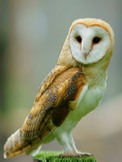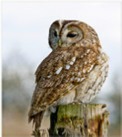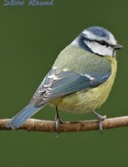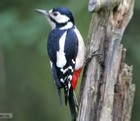

Web design © Graeme de Lande Long. Terms & Conditions.



Community Website
Scaynes Hill Village
It was an interesting spring at Brook Barn, from the point of view of the wildlife, especially the bird life. We have a pair of barn owls, and we have two nesting boxes, one just on the edge of the garden, and one about 100 metres away in a large barn. The one by the garden has a camera in it, and the pictures can be seen on the TV in the kitchen. We were very excited in early April to see that the lone male barn owl had been joined by a female. They seemed to be getting on together very well, and after a week or so we were able to witness them mating. This made us feel a bit uneasy, and we felt like voyeurs.



Spring at Brook Barn
11 June Posted by Mike Lavelle
The internet is a wonderful thing, because I was able to immediately look up the correct diameter of the entrance hole for a blue-tit nesting box (1 inch) and drill the appropriate sized hole in the plywood. I was able to stick the two panels on to the box, and was very glad the next day to see the parents continue to feed the chicks, which fledged a few days later. The same sort of thing was happening down in the woods, although at an earlier stage, and I was able to reinforce that box as well. It makes me realise that a nesting-box with a metal reinforcing ring around the entrance hole is well worth getting. It also shows how one can look into these nests without causing the parents to abandon the chicks, although obviously the less they are disturbed the better.
<< Back to News
With regard to disturbing nests, I was in the garden shed a couple of weeks ago, and as I went to get a fork which was hanging from a hook on the wall, I suddenly realised that I was being watched by a beady eye, about a foot from my face. It was a very brave blackbird, which had built its nest on a ledge, just above where we keep all our garden tools. She did not fly away, and from then on, whenever I went into the garden shed, she kept her eye on me. Last week, she was not always on the nest, but there were two large chicks in it, and today, when I went into the shed, the two chicks were fluttering around, and this evening they were gone.
We got quite excited about the prospect of being able to see eggs hatching, when suddenly one day they both disappeared. A few days later the male returned, and since then he has been roosting in the box on and off. We think that the female is probably laying eggs in the other box in the large barn, which is where she usually lays. Unfortunately, it is a bit too far from the house to be able to get a camera working easily, but in the next few weeks I will be going out to the barn in the evenings to listen out for the tell-tale hissing noise that the young make when they have hatched. They make this noise when they are begging for food. A lot of people don't realise that the adult barn owl makes a very quiet hissing sound when it is flying around, which is only heard by someone who is tuned in to that particular sound. Hooting and screeching is made by tawny owls.

We also have a camera in a blue-tit nesting box, and this year we have had eight chicks (click here for video clip). At the time of writing, the end of May, they are just about to leave the nest. Last year, the nest of eggs was abandoned before they hatched, and we think that the mother must have been killed by a sparrowhawk, which we had been seeing regularly. The other danger to blue-tits is a greater spotted woodpecker. We have a lot of these, and they regularly feed on the peanut feeder by the kitchen, but last week I caught one in the act of raiding one of our other blue-tit nesting boxes (not one with a camera). Woodpeckers will eat the young chicks. I ran out and shooed the woodpecker away, but realised that it had made the entrance hole much larger, as well as pecking a large hole in the roof of the box (which is old and rotten). When I looked into the box, there were two chicks left, and the mother was up in the tree making a lot of noise. I therefore went into my workshop and cut a piece of plywood to cover the hole in the roof, and also a piece to cover the entrance hole.



Tawny Owl
Barn Owl

Blue Tit
Woodpecker
Blackbird
Our other excitement is the presence of grass snakes next to our pond in the woods. They started making an appearance in April, when we had some hot weather, and if you creep very quietly along to where they live, you can often catch them sunbathing. Their camouflage is so good, however, that you can be almost on top of them before you see them, by which time they have seen you, and all you see is the tail end as it slithers away. Last year, I managed to get a photo of one curled up like a Cumberland sausage, but this year they have been more elusive.

Grass Snake
The flower-meadow is looking good already, especially if you walk into the middle. This winter, we put sheep on it for just two weeks, and they ate the grass right down. That means that the wild flower plants got a head start, and were not smothered by the grass. We already have a lot more birdsfoot trefoil than usual, as well as a lot of red clover. There is also going to be a good showing of knapweed, which is very popular with the bees, and later on in the year will be covered in goldfinches eating the seed heads.

Goldfinch